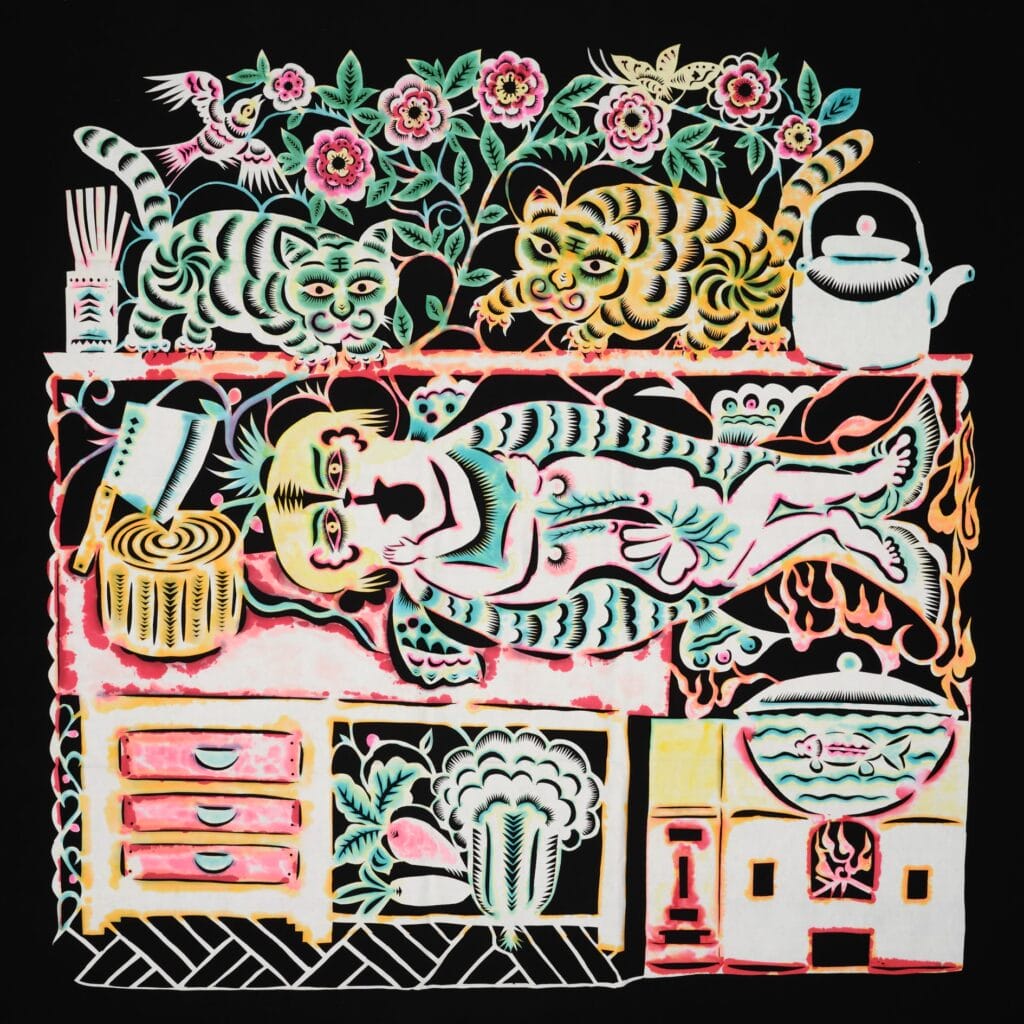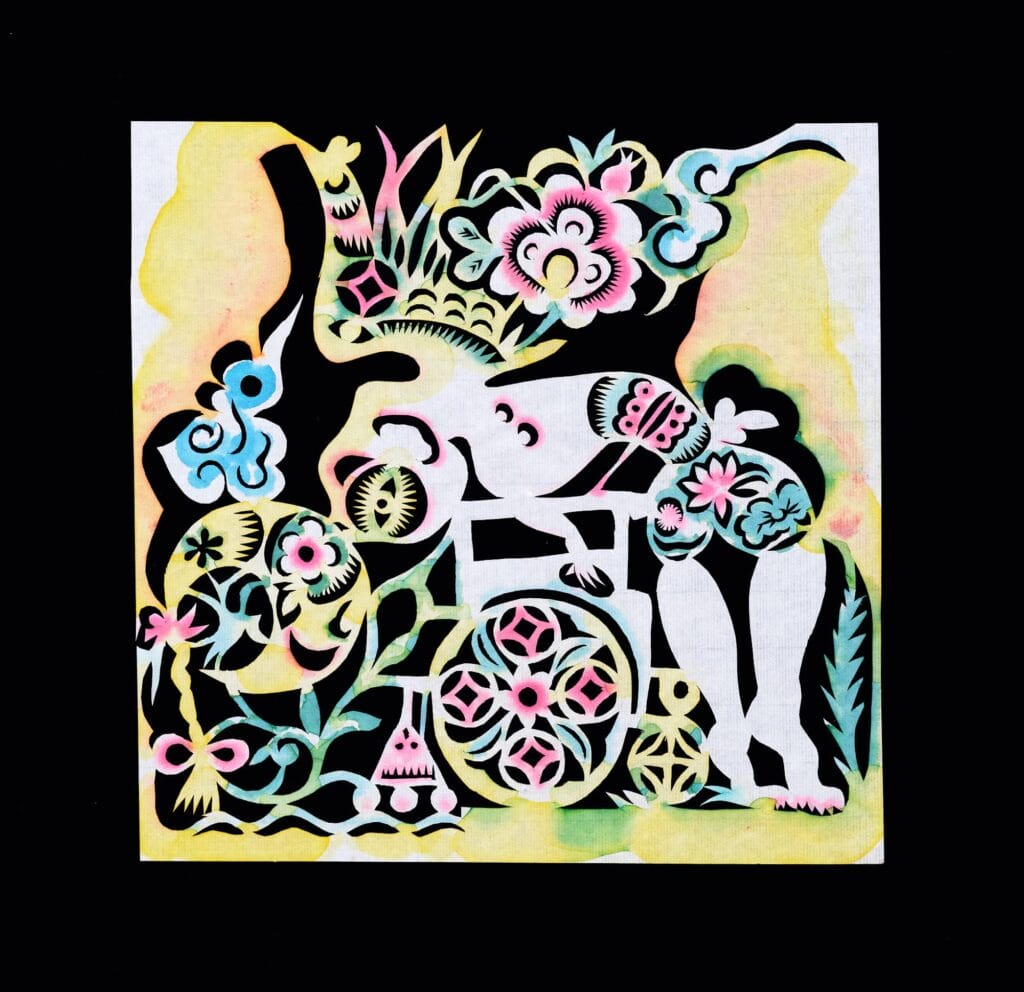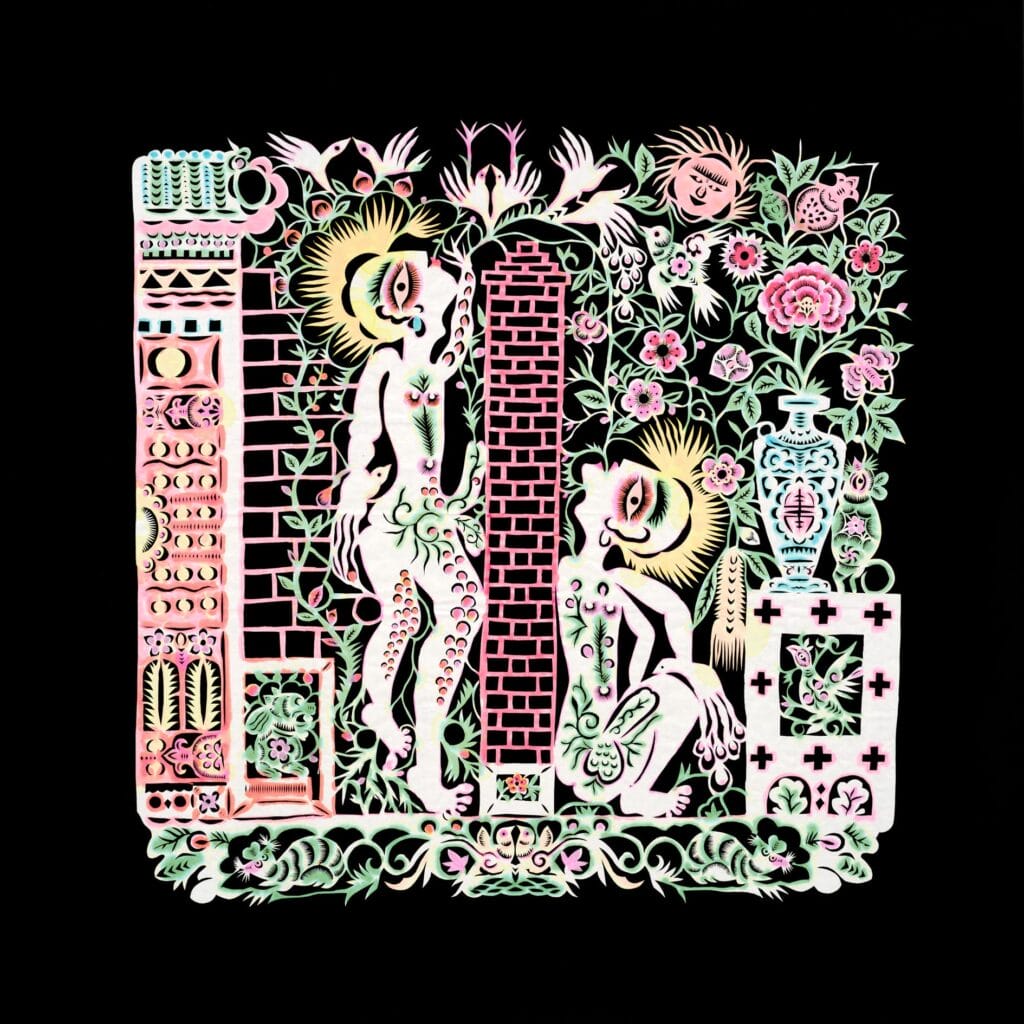Blindspot Gallery is delighted to present “Xiyadie: Butterfly Dream”, Xiyadie’s debut solo exhibition at the gallery, on view from 26 March to 11 May, 2024. Presenting over thirty works from the early 1980s to the present, it is the largest exhibition of Xiyadie ever presented.
Born in 1963 in Weinan, Shaanxi Province, China, Xiyadie is a self-taught, traditional Chinese papercut artist who uses a medium with origins dating back to the Eastern Han Dynasty (25-220 CE) to narrate his journey coming out of rural China as a homosexual person. His autobiographical papercuts chronicle his transformation through an environment that does not lend political agency to queer identifying people, and reflect the struggle of a marginalized individual navigating the big city as a migrant worker. The exhibition titled “Butterfly Dream” alludes to the artist’s pseudonym Xiyadie, meaning Siberian Butterfly, emblematic of resilience and its flamboyant beauty. It signifies the artist’s determined pursuit of freedom and endurance in the harshest of conditions.

The exhibition is divided into three overarching themes: queer liberation, family tableaux, and symbolisms and iconography. With a papercutting practice stemming from the Northern Shaanxi school, distinguished by its auspicious motifs and “humble aesthetics”, the artist takes a contemporary and unique approach by using papercutting as a means to chronicle his personal stories, to channel his homoerotic fantasies, and to find liberation amidst a conservative landscape. His compositions often incorporate built structures, walls, and caves, intertwined with floral elements and fauna, depicting pockexs of spaces wherein one could find escapism and unleash unhinged desires.
Train (1986) depicts Xiyadie’s first homosexual encounter in a train en route to Xi’an. The papercut is centred on the artist’s younger self, sporting a blonde-dyed mullet, in a steamy encounter with a train attendant. The lovers’ legs transform into the coupling rod of the train, connected to its strident wheels. Enraptured in the train attendant’s cabin, the two men are conjoined in infatuation, making love to the rhythm of the chugging train, unaffected by the people dining in neighboring cabins. Auspicious animals gather in the background, including a dancing monkey and a rabbit holding a conductor’s flag. Interwoven with blooming flowers, they symbolize the consummation of their love, marking the beginning of an awakening journey. In 2005, Xiyadie moved to Beijing as a migrant worker, where he found an accepting community in the burgeoning gay subcultural scene. Mirroring the two male lovers along the central axis in Train, Xiyadie’s magnum opus Gate (2013) depicts two men pleasuring each other in front of Tiananmen Square, the symbol of national power and civic life.

Conveying his struggles against customary values, Sewn (1999) is an autobiographical representation depicting Xiyadie sewing up his genital, with his blood-stained needle piercing through the traditional architectural roof, metonymic of orthodoxy. His blood threads into flames as he sits atop a sword, holding in torment and agony as he looks with affection at the photograph of his former lover. Sewn captures an individual inflicted with pain whilst challenging pre-established norms. Another work, Wall (2001) encapsulates the artist’s split identity. The papercut depicts him separated from his other self by a towering wall, conflicted about his gay identity. Striving to overcome barrier, he stretches his arms to reach over to his mirrored self, his hands metamorphosing into birds. The blossoming flowers, apricots and auspicious creatures surrounding them embodies the unceasing force of nature, refusing to be suppressed.
Growing up in rural China, Xiyadie was subjected to societal and familial pressures of a heterosexual relationship. He married a woman and fathered two children, one of whom was paralyzed from cerebral palsy. Life (1988) portrays the birth of Xiyadie’s son. His wife lies on the Chinese kang bed-stove, her head resting on the lap of the artist’s mother as she exerts great strength and effort to deliver the baby. Xiyadie is seen holding a lamp from up above, aiding the doctor who holds a pair of delivery scissors. Their son is born successfully, a plant sprouting from the mouth of the new- born, metaphoric of the tenacity of life.
In order to financially support his family and handicapped son, Xiyadie like many migrant workers moved to the big city to work. Missing (2007) portrays the artist standing alone beneath a clock tower in the Central Academy of Fine Arts in Beijing where he worked as a security guard. The right shows the image of his wife staying behind to care for the family. While physically present at work, his heart is with his son.
Xiyadie blends traditional papercut motifs of flowers and animals, symmetrical patterns, and Chinese characters “double happiness” with recurring personal iconographies such as the butterfly, the kang bed-stove (炕), and personified mythological characters to represent his homosexual fantasies. Double Happiness (1982) is a bawdy play on the
customary Chinese papercut with the character “double joy” (囍), often used to adorn wedding festivities. The word here doubles as a face and a pair of penises, humorously conveying homoerotic sensuality. Paralleling the symmetricity in Double Happiness, Cave (2012) captures the amorous union of two pairs of lovers intertwined into serpents’ tails. Together, the duos flank a face sweating feverishly from passion and desire.

Fish on a Chopping Board (2001)is set against a more domestic backdrop wherein the artist portrays himself and his lover unified as one, taking the form of a fish lying on a kitchen top, about to be cooked and devoured. Their heads are positioned adjacent to a chopping board, too close to the blade of a cleaver. Two cats prowl restlessly above them, waiting for their moment to catch their prey. Despite the encroaching danger, the men copulate in passion, knowingly facing execution for their scandalous act.
For Xiyadie, his titular moniker, the Siberian butterfly, is not merely a totem for escapism and liberation but also an emblem of hope for his handicapped child. In Hoping (2000), he depicted his son transfigured into a butterfly, taking flight from his wheelchair and untethered from the shackles of sickness. In the hands of the artist, the butterfly becomes a moving self-portrayal of metamorphosis, flamboyant and refusing to hide one’s true self. As portrayed in Soaring (1996), Xiyadie and his lover are merged into a single butterfly, and with wings unfurled, they soar into the sky without inhibition.
During the opening reception on 23 March (4 – 6 pm), there will be an artist talk (3 – 4 pm) moderated by Hera Chan, Adjunct Curator, Asia-Pacific, supported by Asymmetry Art Foundation, at Tate. This year, Xiyadie will also be taking part in the Main Exhibition of the 60th International Art Exhibition of La Biennale di Venezia, entitled “Stranieri Ovunque – Foreigners Everywhere”, curated by Adriano Pedrosa.


